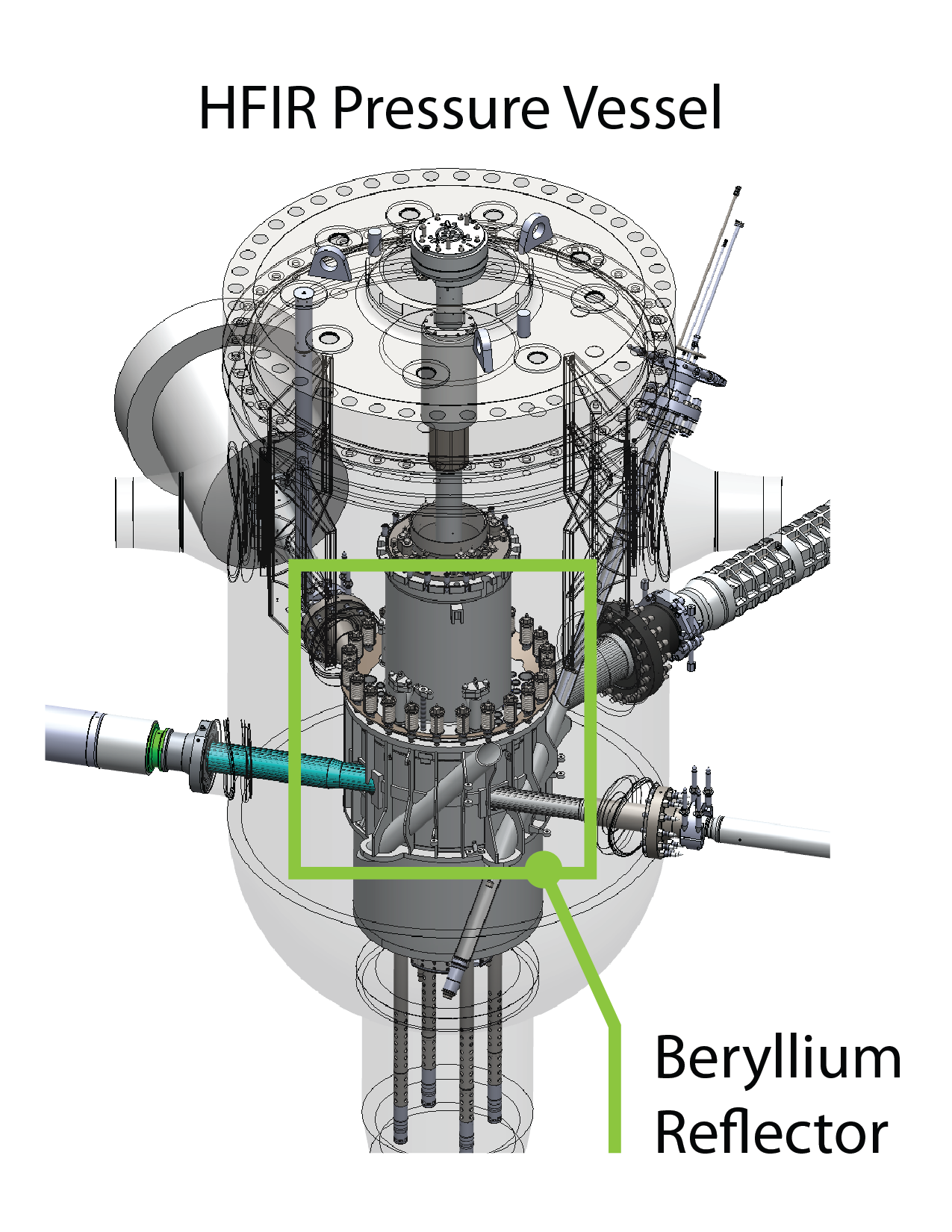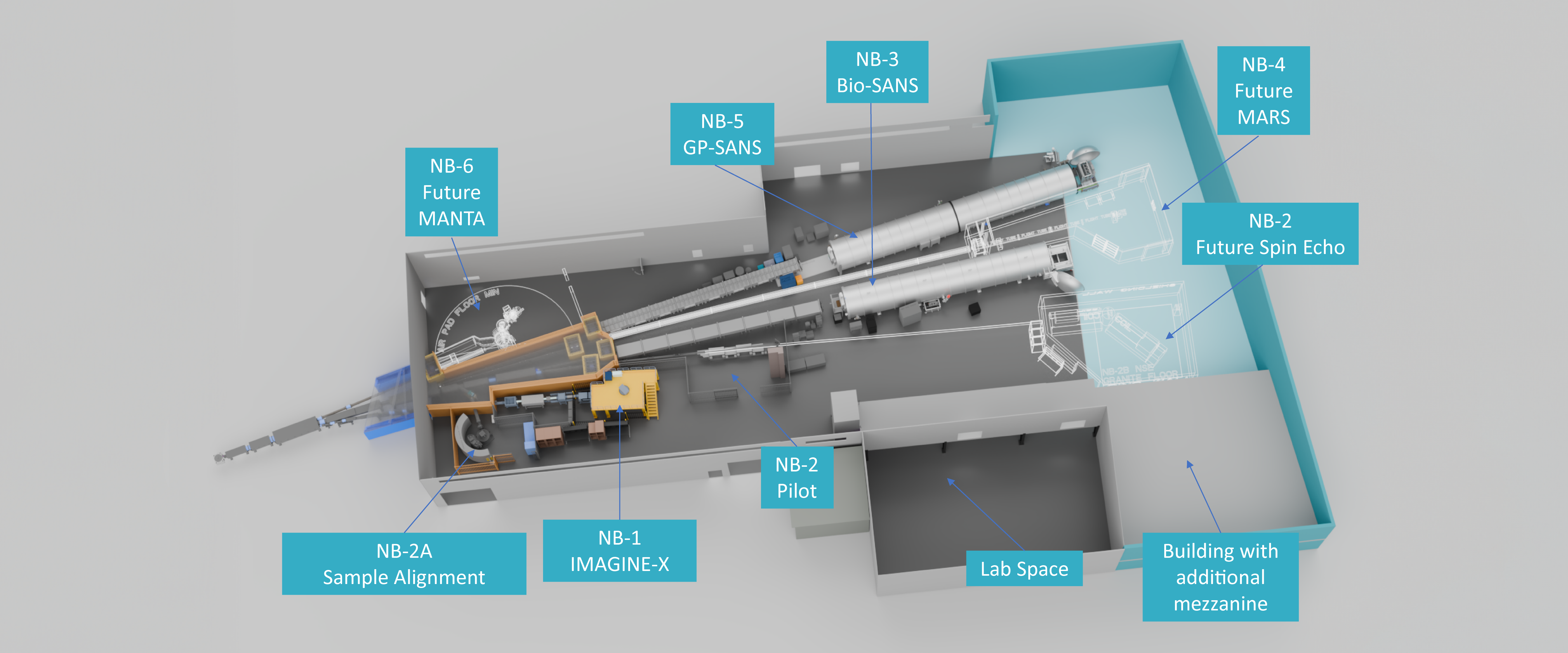HFIR Beryllium Reflector Replacement
 The High Flux Isotope Reactor (HFIR) at Oak Ridge National Laboratory (ORNL) provides one of the highest steady-state neutron fluxes of any research reactor in the world. The thermal and cold neutrons produced by HFIR are used for research into the fundamental properties of materials, including biological and engineered materials, enabling researchers to make scientific discoveries and address some of the biggest challenges facing society today, such as the clean energy transition.
The High Flux Isotope Reactor (HFIR) at Oak Ridge National Laboratory (ORNL) provides one of the highest steady-state neutron fluxes of any research reactor in the world. The thermal and cold neutrons produced by HFIR are used for research into the fundamental properties of materials, including biological and engineered materials, enabling researchers to make scientific discoveries and address some of the biggest challenges facing society today, such as the clean energy transition.
ORNL is planning to replace HFIR’s permanent beryllium reflector, along with other key reactor core components, to sustain and enhance HFIR’s operational performance. See the 5-year planning schedule for up-to-date projections.
The beryllium reflector helps drive neutron production by reflecting stray neutrons back into the core as they are generated. After more than 20 years of successful operation, the reflector is approaching the end of its lifetime and will need to be replaced.
The HFIR Beryllium Reflector Replacement (HBRR) project will feature:
- A new design for the beryllium reflector and beam tubes, which will optimize isotope production and irradiation experiments while sustaining HFIR’s world-leading neutron scattering instrument performance.
- Removal and reinstallation of all instruments from the thermal beam room to allow for beam tube disassembly of horizontal beam (HB) ports HB-1, -2, and -3.
- A redesigned neutron guide network on HB-4, used for transporting beams of cold neutrons to instruments, that will capitalize on the latest technological improvements in neutron optics designs and materials.
- Removal of legacy waste from the reactor pool and cleanout of the pool.
In addition to the activities listed above, ORNL will take the opportunity that the HBRR presents to implement a series of upgrades which will enhance and increase the performance of the HFIR facility and increase science capabilities.
Some of these activities will include:
- Extension to the cold guide hall of roughly an additional 5,500 square feet to allow for reconfiguring and optimizing of the facility’s cold neutron instruments to significantly improve their performance, develop new capabilities, and provide space for new instruments (see FUTURE projects)
- Repairs and improvements to the supporting HFIR infrastructure, such as utilities and shielding, in both the beam room and cold guide hall.
- Opportunistic upgrades to the instrument suite in both the thermal beam room and the cold guide hall, including reconfiguration and optimization to improve performance and develop new capabilities.



